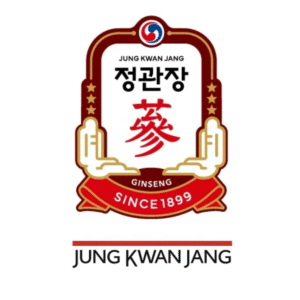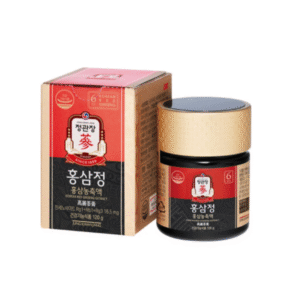Korean ginseng (Panax ginseng C.A. Meyer) owes most of its pharmacological reputation to a family of natural compounds called ginsenosides—glycosylated triterpenoids unique (in large variety) to the Panax genus. But ginseng is more than just ginsenosides: non-saponin components like gintonin (a lysophosphatidic-acid–protein complex), polysaccharides, and polyacetylenes also contribute to its effects. This guide walks through what ginsenosides are, how they’re classified and made, what happens to them when you steam or digest ginseng, how they’re measured and standardized, and why the “non-ginsenoside” fraction still matters.
1) What exactly are ginsenosides?
Ginsenosides are steroid-like saponins built on triterpene aglycones with sugars attached at specific positions (most commonly C-3, C-6, and/or C-20). Chemically, they’re grouped into four scaffolds:
- Protopanaxadiol (PPD): e.g., Rb1, Rb2, Rc, Rd, Rg3, Rh2
- Protopanaxatriol (PPT): e.g., Rg1, Re, Rf, Rg2, Rh1
- Oleanane (OA): e.g., Ro (present in P. ginseng, although less abundant than PPD/PPT types)
- Ocotillol (OCT): rarer in P. ginseng, more common in a few other Panax species
This structural classification underlies differences in polarity, metabolism, and bioactivity. Over the last decade, researchers have cataloged well over a hundred distinct ginsenosides across Panax, with P. ginseng particularly rich in PPD and PPT types.
Key takeaways
- PPD vs PPT differs by the aglycone and where sugars attach; these features tune solubility and biological targets.
- Many ginsenosides exist as C-20 stereoisomers [20(S) and 20(R)], which can behave differently biologically. (This is a recurring theme in modern analyses.)
2) The ginsenoside profile of Korean ginseng (fresh, white, and red)
The “profile” (which ginsenosides and how much) depends on genetics, plant age, growing conditions, and processing. Fresh or “white” ginseng tends to be dominated by major PPD/PPT ginsenosides (Rb1, Rb2, Rc, Rd, Re, Rg1, Rf), while red ginseng (steamed and dried) shows conversion into ‘minor/rare’ ginsenosides such as Rg3, Rg5, Rk1, Rh2, and others. Steaming/heat drives dehydration and deglycosylation reactions that generate these new compounds.
Typical transformations: Rb1/Rb2/Rc/Rd → (via heat or gut microbes) → Rd/F2 → Rg3 → Rh2/Compound K (CK); Re/Rg1/Rf → Rg2/F1 → Rh1. The precise yields depend on temperature/time.
A large portion of ginsenosides in raw P. ginseng actually occur as malonyl-ginsenosides (e.g., m-Rb1, m-Rb2, m-Rc, m-Rd), which are heat-labile and readily convert to their neutral (non-malonyl) forms during processing or storage—one reason red ginseng looks chemically different from white ginseng. Reported proportions of malonyl ginsenosides in P. ginseng can reach ~35–60% of total ginsenosides prior to heat treatment.
3) How your body handles ginsenosides (absorption, microbiome, and “Compound K”)
Native ginsenosides are large and polar, so they’re not absorbed efficiently as-is. Instead, gut microbiota clip sugars stepwise, producing smaller, more lipophilic “rare” ginsenosides (like Rg3) and aglycone-proximal metabolites, notably Compound K (CK) from PPD-type parents (Rb1/Rb2/Rc/Rd). These biotransformations often increase bioavailability and can change pharmacology.
- Historical and modern studies show Rb1/Rb2 → CK via microbial deglycosylation; CK’s structure and pathway have been clarified over decades of work.
- Recent pharmacokinetic work continues to map exposures of PPD ginsenosides and CK after repeated Korean red ginseng dosing.
Why this matters: two people taking the same product may absorb different metabolite patterns depending on their microbiome, diet, or repeated intake—one reason ginseng responses vary between individuals.
4) How ginsenosides are made by the plant (biosynthesis, in brief)
Inside the root, ginsenosides are synthesized via the mevalonate (MVA) pathway → squalene → 2,3-oxidosqualene; then dammarenediol-II synthase sets the dammarane skeleton, after which cytochrome P450s (e.g., CYP716 family) and UDP-glycosyltransferases (UGTs) oxidize and glycosylate to yield the diverse PPD/PPT structures. Current work uses genomics, transcriptomics, and metabolic engineering to boost specific ginsenosides in yeast or in ginseng itself.
5) Not just ginsenosides: gintonin, polysaccharides, and polyacetylenes
- Gintonin is a glycolipoprotein complex carrying lysophosphatidic acids (LPAs) that activate LPA receptors—a completely different signaling axis from ginsenosides. It helps explain certain calcium-signaling effects once attributed vaguely to “ginseng saponins.”
- Polysaccharides from P. ginseng show immunomodulatory effects (macrophage/dendritic cell activation, complement pathways) and are increasingly studied alongside saponins.
- Polyacetylenes (e.g., panaxynol, panaxydol, panaxytriol) are prominent non-saponin lipids; in red ginseng oil they can reach a few percent of the hexane extract. Emerging work explores roles in inflammation, cholesterol metabolism, and anticancer activity.
6) Heat processing and why “red ginseng” feels different
Steaming rearranges the ginsenoside landscape, typically reducing polar majors (Rb1, Re, etc.) while increasing less-polar minors (Rg3 → Rk1/Rg5; Rh1/Rh2, etc.). These “minor” ginsenosides often show distinct bioactivities in preclinical models. The exact spectrum depends on temperature, time, and moisture (e.g., 165 °C for minutes in model systems can maximize Rg3/Rh2 formation).
7) Measuring and standardizing ginsenosides (what labels and labs look for)
Modern quality control uses HPLC/UPLC–UV or –MS/MS to quantify a panel of marker ginsenosides. Pharmacopeias differ slightly, but Rb1 and Rg1 are widely accepted markers for P. ginseng; red ginseng monographs also emphasize Rg3. Health authorities often set ranges for “total ginsenosides” on finished products. Methods that quantify multiple ginsenosides simultaneously (sometimes with single-standard calibration) are now common in labs.
- Example guidance: Health Canada’s 2024 monograph suggests products provide ~4–7% total ginsenosides (by extract), while pharmacopeial monographs define sums and minimums for specific markers (e.g., Rg1/Rb1 ± others), depending on the dosage form and processing. Always read the exact monograph applicable to your market.
- Analysts also examine the Rb1 : Rg1 ratio to distinguish Asian vs American ginseng profiles in trade and authentication work.
- Academic and regulatory surveys have flagged authenticity problems in some commercial herbal products, underscoring the value of verified suppliers and transparent testing.
8) Beyond chemistry: what ginsenosides do (a concise map)
While clinical evidence varies by indication, preclinical and translational studies attribute diverse actions to specific ginsenosides and their metabolites:
- PPD family (e.g., Rb1, Rg3, Rh2, CK): neuroprotective, metabolic, anti-inflammatory, and anti-proliferative effects in models; CK is a key microbiome-derived metabolite with growing pharmacology.
- PPT family (e.g., Rg1, Re, Rh1): cognitive/anti-fatigue and anti-inflammatory signals recur across datasets (again, mostly preclinical).
- Minor/less-polar ginsenosides (e.g., Rg3 → Rk1/Rg5): enriched in red ginseng; often reported to modulate apoptosis, angiogenesis, or membrane fluidity in vitro/in vivo models.
- Polysaccharides & gintonin: immunomodulation (polysaccharides) and LPA-receptor signaling (gintonin) provide parallel mechanisms that can complement ginsenosides.
Important nuance: processing + microbiome = final exposure. The ginsenosides you swallow are not the same molecules your tissues ultimately “see.”
9) Practical notes for formulators and buyers
- Processing choices (white vs red vs specialized heat/humidity protocols) deliberately shift ginsenoside spectra. Some manufacturers now optimize for Rg3/Rk1/Rg5 enrichment using controlled steaming or novel thermal methods.
- Storage and extraction conditions affect malonyl-ginsenoside stability and the final assay results (malonyl → neutral forms over time/heat).
- Label reading: Look for clear marker panels (e.g., Rg1, Rb1, Rg3) and third-party assay reports consistent with recognized monographs (USP/Pharmacopoeias).
10) Quick reference: major chemical families in P. ginseng
| Family | Representative ginsenosides/components | Typical context in P. ginseng |
|---|---|---|
| PPD | Rb1, Rb2, Rc, Rd, Rg3, Rh2, CK (metabolite) | Abundant in raw root; many convert to Rg3/Rh2 with heat or to CK via microbiota. |
| PPT | Rg1, Re, Rf, Rg2, Rh1 | Abundant in raw root; heat/microbes generate less-polar derivatives (Rg2/Rh1) |
| Oleanane | Ro | Present as a minor class; included in some analytical panels. |
| Ocotillol | (e.g., pseudoginsenoside types) | Rare in P. ginseng; classification-level relevance. |
| Malonyl-ginsenosides | m-Rb1, m-Rb2, m-Rc, m-Rd | Heat-labile reservoirs that convert during processing/storage. |
| Gintonin (non-saponin) | LPA-bound glycolipoprotein complex | Activates LPA receptors; distinct from ginsenosides. |
| Polysaccharides (non-saponin) | RGPS/GP fractions | Innate-immune modulation (macrophage/DC/complement). |
| Polyacetylenes (non-saponin) | Panaxynol, panaxydol, panaxytriol | Lipid fraction; studied for anti-inflammatory/metabolic/anticancer roles. |
Bottom line
- Ginsenosides are the signature actives of Korean ginseng, dominated by PPD/PPT types that rearrange with heat and transform via gut microbes into better-absorbed “rare” ginsenosides and CK. This chemistry explains why red ginseng and white ginseng can feel different—and why two people may respond differently to the same product.
- Non-saponin partners—gintonin, polysaccharides, and polyacetylenes—add orthogonal mechanisms (LPA signaling; innate-immune modulation; lipid bioactivities), rounding out ginseng’s systems-level effects.
- For quality, look for transparent assays (often including Rb1, Rg1, ± Rg3) aligned with pharmacopeial markers, and remember that processing, storage, extraction, and your microbiome all shape what ends up active in your body.



